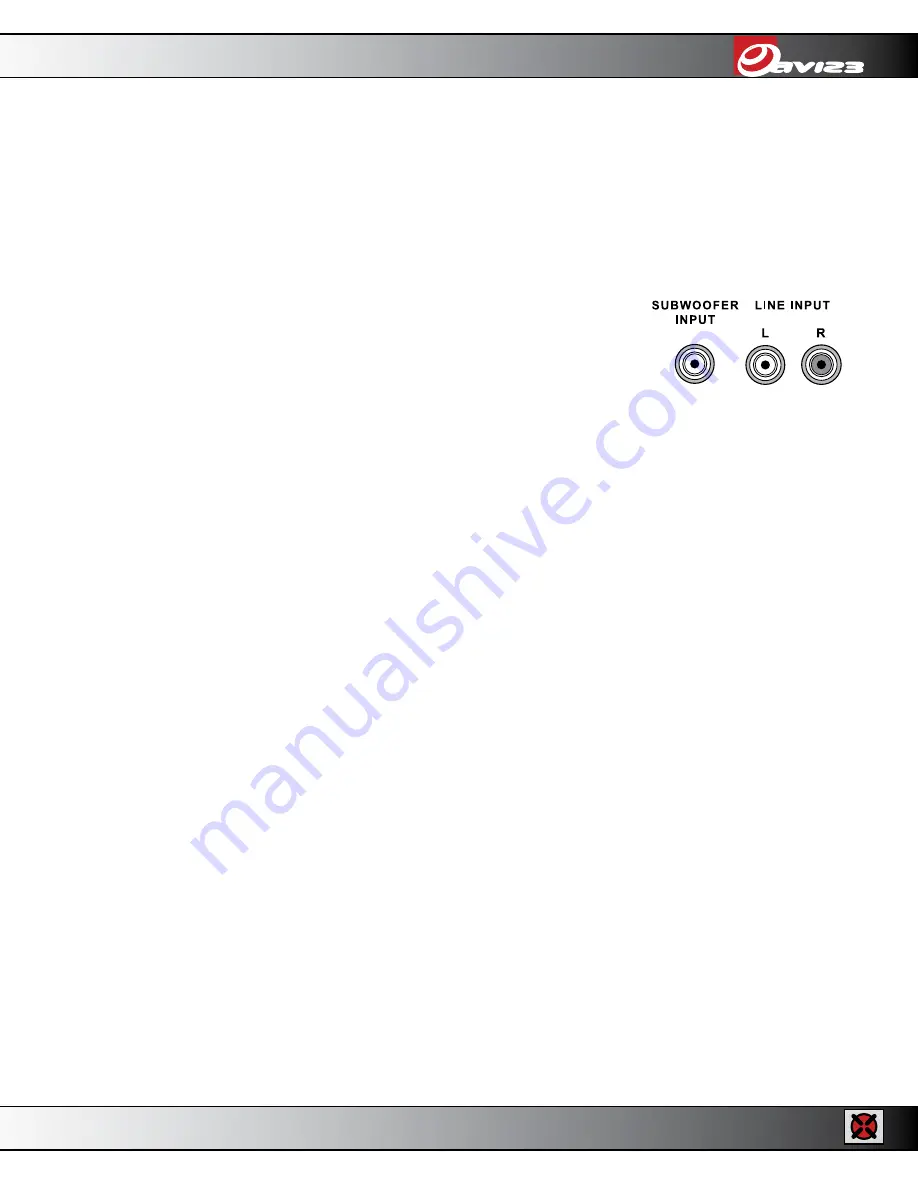
Page 1
Line Level Inputs
If your receiver or preamplifier has a set of full range RCA line outputs that are not
already being used, you can connect these into the LEFT and RIGHT Line Input jacks
(pictured at right in the illustration). When using these inputs, the crossover is still
active so a full range input will be filtered to allow only the lowest frequencies to reach
the subwoofer. There are no line outputs on the x-sub so if there are multiple devices
needing an input from only a single RCA preamp output on your preamplifier or receiver,
you can use “Y adapters” to split the output. We do not
recommend splitting it to more than two devices and both
should have relatively high input impedances (20k Ohm or
higher) so there is no significant signal loss.
Dedicated LFE Input (Labeled as “Subwoofer Input”)
This is the recommended input to use if your x-sub is part of
a multi-channel home theater with discrete outputs on the
preamplifier/processor for an “LFE” (Low Frequency Effects)
channel. There is only a single RCA for this input (pictured
at left in the illustration) because the signal has already
been summed into a mono channel in the preamplifier and
it bypasses the crossover filtering because that function is
controlled by the LFE processing functions upstream. Short
of level matching with the gain and using the polarity switch (0 or 180°), this is the
easiest method of connection for using the x-sub in a home theater application. The
dedicated LFE input is labeled “Subwoofer Input”. Remember that you must make sure
the preamplifier/processor has been configured to enable the LFE channel output so the
x-sub will have signal.
Wiring for Correct Polarity
When connecting the speakers to the amplifier you need to observe the proper polarity.
This simply means that you should connect the positive terminal on your receiver or
amplifier (may be marked “+” or be colored red) to the positive terminal (red) on your
AV123 x-series speaker. Connect the negative terminal on the amplifier (“-” or black)
to your speaker’s negative (black) terminal. Don’t worry about damaging anything if
you make a mistake here. Sound quality will suffer but you won’t ruin anything. You can
definitely hear a difference if it gets connected backwards though. It really affects the
imaging and low frequency response in a negative way, so double check your work!!
When connecting the speaker wiring you’ll see that it has two different conductors
- silver and copper colored are the most common. If you can’t see the conductors
themselves, look closely at the insulation. You’ll notice that the insulation over one
conductor is different than that over the other conductor - one will have slight molded
ridges in it, the other will be smooth, for example. It really makes no difference which
one you pick for positive or negative,
just be consistent!
Other speaker cable may be
marked with designated positive and negative conductors.
Use the LINE INPUT (right)
for standard full range inputs
OR the SUBWOOFER INPUT
(left) for applications where
a home theater processor is
used. The difference is that the
SUBWOOFER INPUT bypasses
the active crossover because
the preamplifier already
takes care of that in the LFE
processing.
Содержание x-cs
Страница 1: ...x series Enjoyment Guide...
Страница 23: ...Page 23 USER NOTES...























